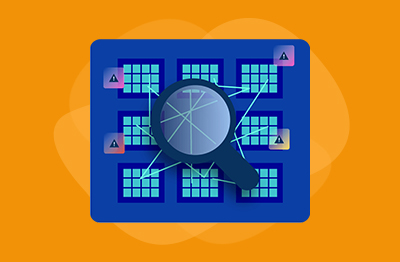What is Liferay?
Liferay is a software company that provides digital experience platforms (DXPs) for businesses to create and manage customer experiences across web, mobile, and connected devices. Liferay is well known for Liferay DXP (Digital Experience Platform) launched in 2016, an enterprise platform for building, deploying, and maintaining web portals, websites, and other digital experiences.
Liferay is a software company that provides digital experience platforms (DXPs) for businesses to create and manage customer experiences across web, mobile, and connected devices. Liferay is well known for Liferay DXP (Digital
Experience Platform) launched in 2016, an enterprise platform for building, deploying, and maintaining web portals, websites, and other digital experiences.
Liferay's original product, Liferay Portal, was created in 2000 to provide an enterprise portal solution for non-profit organizations. The company was incorporated under the name Liferay, Inc. In 2004.
Liferay offers both community and enterprise editions of its platform. The Liferay Community Edition is an open-source version, freely available for anyone to use. It includes most of the core features but lacks some of the advanced enterprise functionalities and support. Details of the open-source licensing for Liferay are covered, here: Open Source - Liferay.
Liferay currently offer a number of enterprise editions, these versions are paid offerings that include additional enterprise features, professional support, and regular updates. At the time of writing the editions include:
- Liferay SaaS: formerly known as “Liferay Experience Cloud”
- Liferay PaaS: formerly known as “Liferay Experience Cloud – Self-managed”
- Liferay Self-Hosted: formerly known as “Liferay DXP – Self-hosted". This includes the option to deploy on-premises as well as in cloud.
See Liferay’s website for latest SKU information and feature comparisons: Offerings - Liferay.
Key features of Liferay solutions
- Portal Development: Liferay is known for its portal development capabilities, allowing organizations to create portals that serve as a central point for information, applications, and processes.
- Content Management: Liferay provides content management features, enabling users to create, manage, and publish content with ease. It supports a wide range of content types and integrates with various content repositories.
- Personalization: The platforms offer advanced personalization features to tailor the user experience based on user behavior, preferences, and demographics. This helps in delivering more relevant content and services to users.
- Integration: Liferay solutions are designed to integrate with a wide range of enterprise systems, including CRM systems such as Salesforce, ERP systems, and other enterprise systems. It supports various integration methods, including REST and SOAP APIs. Liferay maintain a marketplace of connectors, see: Applications - Marketplace - marketplace.liferay.com.
- Workflow and Collaboration: Liferay includes workflow and collaboration tools to improve productivity and streamline business processes. These tools facilitate document management, task assignments, and collaborative content creation.
- Responsive Design: Liferay supports responsive design out of the box, ensuring that websites and portals work seamlessly across different devices and form factors, including desktops, tablets, and smartphones.
- Security: The platform includes standard enterprise security features to protect data and ensure compliance with industry standards. It supports authentication, authorization, and auditing.
- Modularity and Extensibility: Liferay is modular, allowing businesses to extend and customize the platform to meet specific needs. It supports plugins, modules, and themes.
Who uses Liferay?
Common use cases for Liferay include:
- Intranets and Employee Portals: Many organizations use Liferay to create intranets and employee porta communication ls that provide a centralized platform for internal, collaboration, and access to corporate resources.
- Customer Portals: Businesses use Liferay to build customer portals that offer personalized experiences, self-service options, and support services.
- Public Websites: Liferay is used to develop and manage public-facing websites with rich content and interactive features.
- E-commerce Platforms: The platform can be used to create e-commerce sites with integrated product catalogs, shopping karts, and payment gateways.
Liferay maintains a repository of case studies, here: Case Studies | Liferay. Many global “household name” brands are featured, and B2B and B2C use cases feature prominently.
What are Liferay Portlets and what are Portlet Functions?
Liferay portlets are key components of the Liferay platform, designed to deliver specific functionalities within a web portal. A portlet is a Java-based web component, managed by a portlet container, that processes requests and generates dynamic content. Multiple portlets can be placed on a single webpage, each providing distinct services or content segments.
Liferay portlets are modular, reusable user interface components that can be independently managed and displayed within a portal page. They conform to the Java Portlet Specification (see JSR 168, JSR-286, and JSR-362) and are intended to be used in portal environments where they coexist with other portlets.
Key characteristics of Liferay Portlets
Portlets process requests and generate responses like any other web application. One key difference, however, between portlets and other web apps is that portlets run in a portion of the web page. When writing a portlet application, a developer only needs to worry about that application; the rest of the page, the navigation, the top banner, and other global components of the interface and so on, are all handled by other components.
Key benefits of portlets include:
- Modularity: Portlets are self-contained modules that encapsulate specific functionality, making it easy to manage and update individual components without affecting the entire application.
- Reusability: Portlets can be reused across different pages and even different Liferay portals, enhancing consistency and reducing development effort.
- Interactivity: Portlets can interact with each other and share data, allowing for complex, interactive applications within a portal.
- Personalization: Users can customize the appearance and behavior of portlets based on their preferences and roles.
Portlet Functions
Liferay portlets serve a variety of functions, depending on the needs of the portal. Here are some common portlet functions:
- Content Display: Web Content Display: Shows static or dynamic content created using Liferay's content management system.
- Blogs: Displays blog posts and allows users to interact by commenting and liking posts.
- Forms: Collects user input through forms and processes the data for various purposes, such as surveys or registrations.
- Message Boards: Provides a platform for users to create and respond to forum posts.
- Login and Registration: Manages user authentication and registration processes.
- User Profile: Displays and allows editing of user profile information.
Liferay Portlet and Portal Functions and APIs
The documentation for Java developers working with Liferay portlets is available, here: Index of / (liferay.com).
Liferay support an active user community to support developer working with their APIs. Details of forums, slack channels, blogs and so on can be found, here: Help - Liferay.
Why monitor Liferay Portlets?
Portlets are the building blocks of Liferay portals, responsible for rendering content and functionality to users.
Monitoring portlets is essential for several reasons:
- Performance Optimization: Identifying slow or resource-intensive portlets helps in optimizing performance, ensuring that the portal remains responsive.
- Availability: Ensuring that portlets are available and functioning correctly is critical for user satisfaction and business continuity.
- Troubleshooting: Quickly identifying and resolving issues with specific portlets minimizes downtime and disruption.
Key Liferay metrics to monitor
When monitoring portlets, several key metrics should be tracked to ensure optimal performance and availability.
- Response Time: Measures the time taken by a portlet to respond to user requests. High response times can indicate performance issues.
- Throughput: The number of requests processed by a portlet within a given time frame. Monitoring throughput helps in understanding load patterns.
- Error Rates: Tracks the frequency of errors encountered by a portlet. High error rates can signal underlying issues that need attention.
- User Interactions: Analyzing user interactions with portlets provides insights into usage patterns and can help in optimizing the user experience.
Similar products used as alternatives to Liferay?
Other products that are often used to achieve similar results to Liferay, include:
- Adobe Experience Manager (AEM): A comprehensive content management solution for building websites, mobile apps, and forms.
- Sitecore: A digital experience platform that combines content management, digital marketing, and e-commerce.
- Drupal: An open-source content management framework providing a back-end framework for websites.











